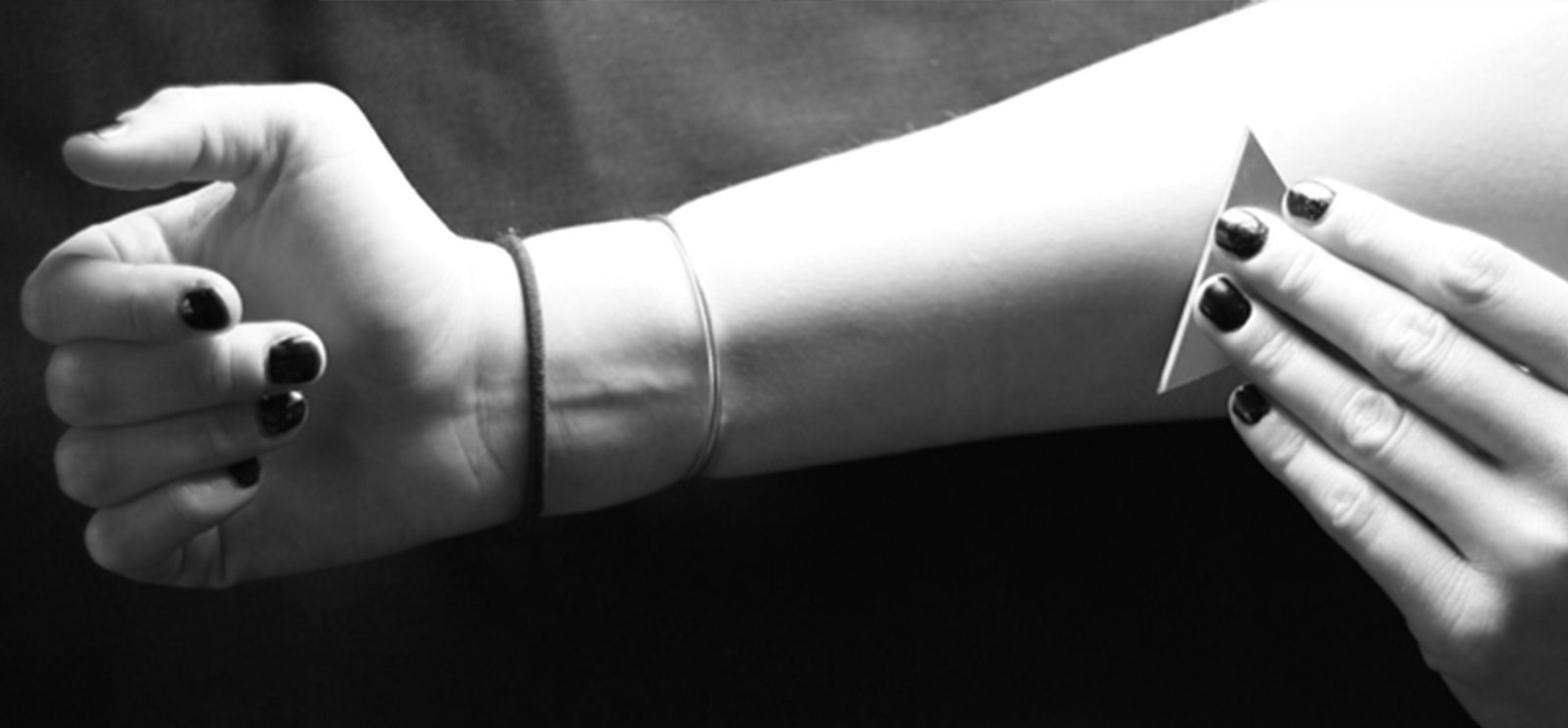
Self-injury, says the Adlers, is a nonsuicidal act. (Photo by Joy Olivia Miller)
Deviance researchers Patricia and Peter Adler study the social side of self-injury.
Sociologists Peter and Patricia “Patti” Adler, both AM’74, didn’t write the book on deviance, but they did edit the standard text: Constructions of Deviance: Social Power, Context, and Interaction (Wadsworth Publishing Company), now in its seventh edition. By virtue of their chosen field of study, examining behaviors such as crime, drug use, and eating disorders, they tend to hear from a lot of students with stories of their own deviant behavior. “We come off as very nonjudgmental adults about behaviors that others disdain, ostracize, or reject,” says Peter, a University of Denver professor. “In other words, we are sympathetic ears.
For their most recent book, The Tender Cut: Inside the Hidden World of Self-Injury (New York University Press, 2011), he and Patti, a University of Colorado at Boulder sociologist, focused on one such set of stories: self-injury. The act of deliberately harming oneself without suicidal intent, self-injury—which can include cutting, burning, branding, skin picking, breaking bones, or severely biting cuticles or nails—first came to their attention in 1982, when a student told Peter about her self-mutilation. Says Peter, “I had never heard of anyone doing anything like this before.”
Others came to the Adlers with similar confessions. In the late 1990s a high-school student, given the pseudonym “Janice” in The Tender Cut, admitted to Peter that she cut herself. She was failing physical education because she had stopped going to gym class. “She would have to be in shorts,” he says. “Her cuttings were on her legs, and she was embarrassed and afraid of being outed.” By then the phenomenon had received public attention through movies and articles such as a 1997 New York Times Magazine cover story. Janice “was a fairly straight girl who did not generally attend the usual drinking and drug parties that most of her peers were attending. Why, then, would a seemingly normal girl, with so much ahead of her, levelheaded in other parts of her life, turn to this form of coping?”
A topic then limited to psychologists and psychiatrists, self-injury seemed like a rich research subject. Peter mentioned cutting to his classes at Denver, and Patti to her classes in Boulder. “Students in droves began to write to us, wanted to talk to us, and eventually wanted to be interviewed,” Peter says. “By 2000 we knew that we wanted to make a systematic study of this and talk to a wider spectrum of people.”
An account of the first sociological longitudinal study of self-injurers living in their natural worlds, The Tender Cut traces how subjects evolved over time and how they learned to resolve their dilemmas. For eight years the Adlers gathered more than 135 life histories of people who harmed themselves. They announced their project in class and on the radio, finding volunteers who hurt themselves in private as well as those who had formed a self-injury subculture. “When we hit the Internet,” Patti says, “we hit the mother lode.”
Some people injured themselves as a coping mechanism, as a form of “self-therapy.” Some adolescents and adults enjoyed it, while others wished they could stop. Cutting was the most popular method among their subjects, with burning coming in second. Some people—mostly before the mid-1990s—discovered self-injury on their own; others heard about it from friends or on the Internet.
Within the world of self-injury, the Adlers learned, there are norms of how people behave. Men don’t try to hide their injuries, for example, as opposed to women, who often cut on their inner arms or upper thighs. “Women are socialized to turn emotional anguish inward,” Patti says. By cutting or burning themselves, they’re “seeking control over their body in the same way as eating disorders.” Men, on the other hand, “are defined as manly and tough,” the Adlers write, when they flaunt their cutting or burning.
Because of the sensitive nature of the research, the Adlers’ face-to-face interviews were not easy. The “difficult thing was not listening to what they did to themselves,” says Patti, “but it was the emotional pain they had gone through in their lives.”
Janice, the leg cutter, talked with the Adlers when she was 22 about the first time she cut herself. At age 15 she had been raped, and about four months later, after a bad day at school and a huge fight with her family, she accidentally cut her legs while shaving in the bath. “It made me feel a lot better and gave me something else to focus on,” Janice says in the book. “For some reason, if you’re that upset, seeing that you’re physically hurt, seeing blood in the water, or whatever, made me feel a lot better.”
Janice continued to cut herself throughout high school and the “tough, adjustment years of college,” Peter says. “Then it began to wane in her early 20s.” Now, he says, she has a thriving law practice, is married with a baby son, and does not cut any more.
“We saw people managing self-injury or people who quit without going into a clinic or the hospital,” Patti says. They saw subjects’ “careers and interactions—so much more that [psychologists] never saw” because the psychological model of self-injury ignores the cultural and social forces surrounding the practice.
“The social meaning of self-injury has completely changed” since it entered the public consciousness in the mid-1990s, as communities both virtual and actual formed around self-injury, Patti says. “Something that people thought was a suicidal gesture” came to be recognized as “an expression of emotional angst and a way of expressing rebellion or disaffection. Emotional pain is a constant. Nobody does this who’s not feeling bad.”
